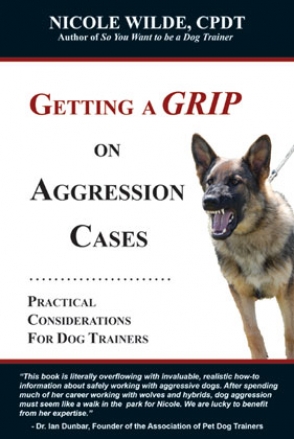Is your dog afraid of strangers? Would he rather hide than play with other dogs? Does he take cover at the sound of thunder, or cringe when you pick up a brush or nail clippers? Never fear!
So You Think You Know About Bloat?
I thought I did. It’s the second leading cause of death among dogs, after all. I knew that a potentially fatal thing can happen when a dog’s stomach fills with gas and fluid, and that it’s often accompanied by gastric torsion—a twisting of the stomach. If the dog isn’t given emergency veterinary treatment in time, he will die. Bloat happens most often to deep-chested breeds, although the cause is still largely unknown. The warning signs include a stomach that’s bloated and hard, and dry heaving without the ability to vomit.
Well, that was the extent of my knowledge until a few short weeks ago when my own dog Mojo bloated. It was late afternoon on the Friday leading up to Memorial Day weekend. (There seems to be an unwritten rule that dog emergencies happen on holiday weekends and whenever else your vet is closed.) Mojo, my now 14 ½-year-old German shepherd/Rottie/Malamute/wolf mix, began pacing and whining. He vomited a little bit of white, foamy-looking stuff. I called the emergency vet, as my regular vet was already gone. The receptionist, after consulting with the vet on duty, told me to simply fast Mojo for twelve hours. Ten minutes later my husband came home from work and I told him what had happened, and that I was worried. As we were speaking, Mojo went outside and spewed a huge amount of that same white foam. We immediately rushed him to the nearest emergency clinic.
A tech took Mojo to the back room to be examined by the one vet on duty, who was busy trying to save another dog who was also having a very bad start to his weekend. The vet came out and told us that Mojo had bloated. I was floored—bloat had never even entered my mind. After all, he hadn’t been dry heaving; he’d actually been vomiting. But he was bloated, gastric torsion and all, and we were told that if emergency surgery was not performed immediately, he would die. The fee they quoted us was incredibly high and, as they warned, the aftercare was going to be very difficult. And he was fourteen-and-a-half. His chances of making it through the surgery were 50/50. Were we sure we wanted them to try to save him? Of course we were!
It was a very long and very difficult weekend, but thank goodness, Mojo pulled through. The first 72 hours after bloat surgery are critical, as many dogs develop heart arrhythmias during that time and die. Did I mention how long and difficult the weekend was? The following weeks involved, as promised, plenty of aftercare, but as my husband said, “He’s the Mighty Mojo Man, he’s a fighter.”
In the course of telling some of my dog training clients about the experience, I was shocked to realize how little people actually know about bloat. Most I spoke to hadn’t even heard of it. I am now on a mission to inform as many of my clients (as well as dog owners I encounter) about bloat, including the common warning signs, as well as the not-so-common ones.
If you’d like to research bloat for yourself, here are some links to get you started:
http://www.vet.purdue.edu/epi/bloat.htm
http://www.dogbreedinfo.com/articles/caninebloat.htm
http://www.canismajor.com/dog/bloat.html
Mojo is laying at my feet as I finish typing this. He seems very happy to be at home where he surely must know how lucky and how loved he is.










